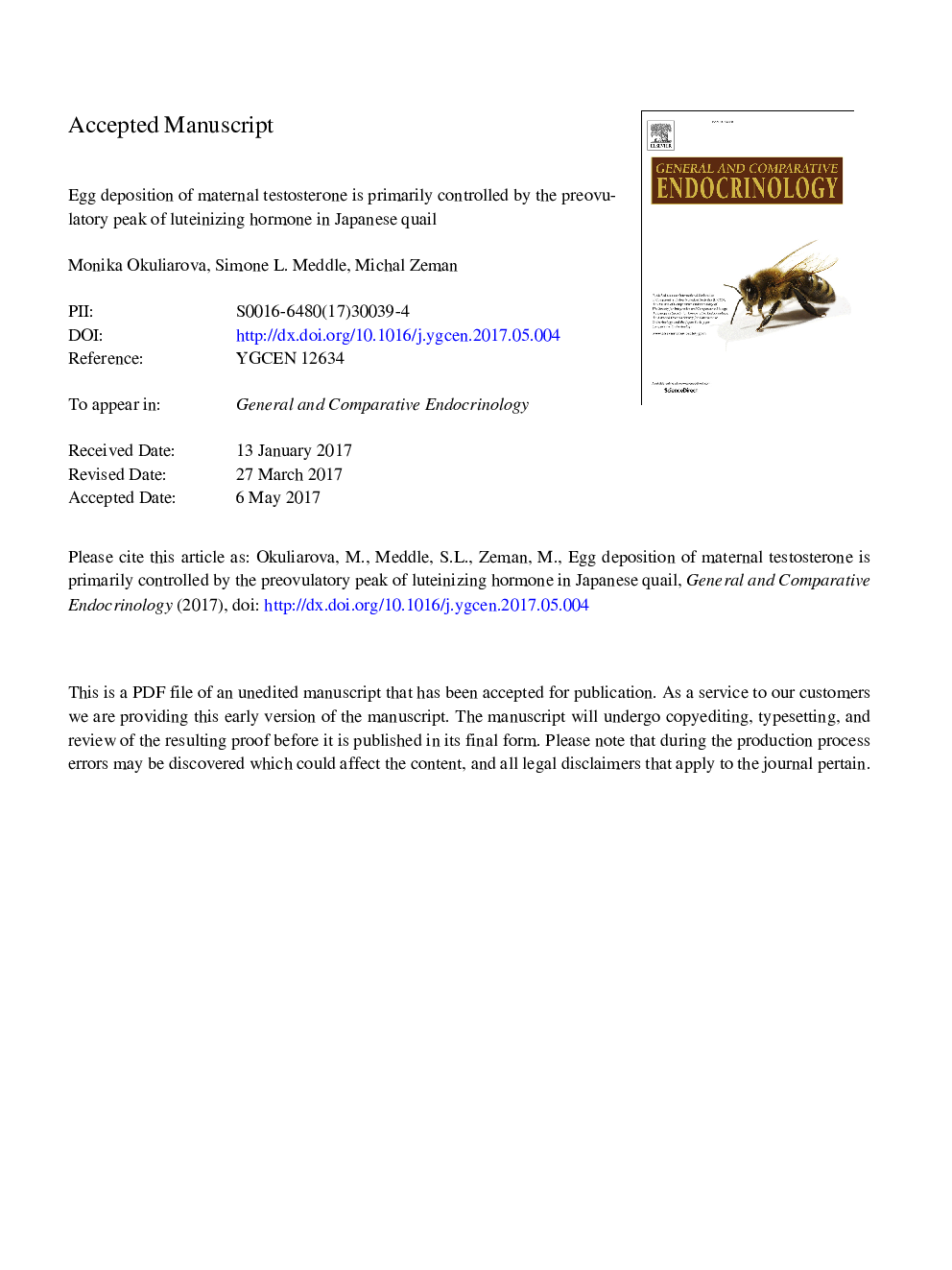| Article ID | Journal | Published Year | Pages | File Type |
|---|---|---|---|---|
| 8631359 | General and Comparative Endocrinology | 2018 | 17 Pages |
Abstract
Differential transfer of maternal testosterone (T) into egg yolk provides a means of adjusting an offspring's phenotype to ambient environmental conditions. While the environmental and genetic driven variability in yolk T levels is widely described, the underlying mechanisms are poorly understood. Here, we investigated whether neuroendocrine mechanisms controlling ovulatory processes are associated with the regulation of yolk T deposition. Circulatory profiles of luteinizing hormone (LH), T and estradiol levels were analysed during the last 7Â h before ovulation in Japanese quail selected for contrasting yolk T concentrations. Moreover, the pituitary responsiveness to a single challenge with gonadotropin releasing hormone (GnRH) was evaluated. High egg T (HET) birds displayed higher concentrations of LH at 3.5Â h before ovulation than low egg T (LET) birds while no differences were found around the time of expected ovulation. The pre-ovulatory profile of T and estradiol levels did not differ between LET and HET females but pre-ovulatory plasma T positively correlated with LH concentrations at 6.5Â h and 3.5Â h before ovulation. The LH response to GnRH did not differ between LET and HET females. Our results demonstrate that the pre-ovulatory LH surge can determine the amount of T transferred into the egg yolk. This link between yolk T deposition and the ovulatory cycle driven variation of reproductive hormones may explain balance between the effects of circulating T on female's reproductive physiology and yolk T on offspring phenotype.
Related Topics
Life Sciences
Biochemistry, Genetics and Molecular Biology
Endocrinology
Authors
Monika Okuliarova, Simone L. Meddle, Michal Zeman,
